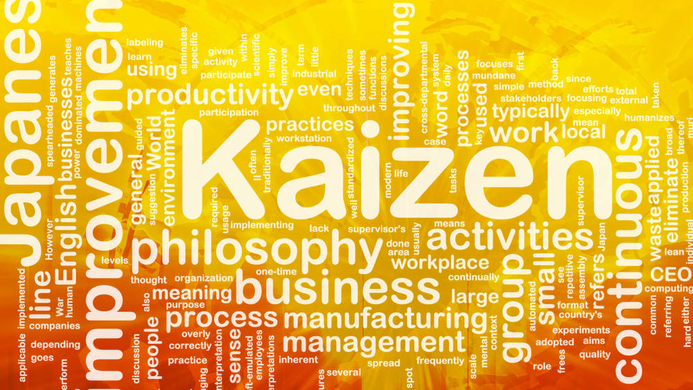Kaizen, did you say Kaizen? This term, created by the combination of two Japanese words (Kai and Zen, which respectively mean “change” and “good” in Japanese), is well-known in the management world but its meaning is not always clear. “Masaaki Imai defined it as a means of continuous improvement in work life, as well as in personal and social life,” says Laoucine Kerbache, who decided to find out what Kaizen is really about while he was a visiting professor at ESADE in Barcelona. Regarded as the key to competitiveness of Japanese companies since the 1980s, this gradual and smooth process is based on small, concrete improvements, which are simple, inexpensive, and made continuously on a daily basis.
Kaizen for everyone
Today, in business, Kaizen comes in a multiple methodologies and techniques such as Gemba Kaizen workshops, Lean-Kaizen in Six Sigma, Office Kaizen, Kaizen Teian, Kaizen Flash, and Kaizen Blitz. Popularized in the West, Kaizen Blitz, for example, aims for radical change in a short amount of time. “With the adoption of Just-in-Time, Lean Production, and Six Sigma, American and European companies copied the concept of Kaizen but with many ambiguities and inconsistencies,” says Kerbache. “The literature review that we carried out reveals the importance of clarifying this concept, especially for operations management of products and services.”
Three perspectives and a few guiding principles
Kerbache and his co-authors identified three different perspectives or visions, which each include a set of principles and techniques. “The first considers Kaizen as a management philosophy and advocates for continuous improvement to enhance organizational performance and progress,” he says. “In the second, Kaizen is a component of Total Quality Management, which focuses on responding to customer needs and business objectives. In the third perspective, Kaizen is considered a series of methodologies and techniques to reduce waste, which is the vision developed by Lean Management.”
By comparing these three perspectives, Kerbache and his co-authors highlight the nuances in Kaizen as well as the overlap and duplication that can exist within and become exacerbated by environment and culture. “When it comes to implementation, some things do not fit neatly into the different perspectives; we do not know if they fall under a management philosophy, total quality, or a methodology like Lean. So, the risk is great to mix approaches and to implement an inappropriate action plan, using ineffective tools. This is the case of most big failures we have seen, especially when Kaizen is used to support a sudden change.”
In Kaizen, it is essential to empower and involve everyone.
When Kaizen goes wrong
When it is well understood and well managed, Kaizen can give outstanding results. This has been the case with many companies in food, textile, and automotive industries. The most emblematic case is that of Toyota, but companies like Honda and Mazda have also benefited from the concept. Why do some Western companies like Chrysler have difficulties taking advantage of Kaizen? “The results obtained from using Kaizen at Chrysler were disappointing overall, because the method was only partially implemented. Change was supported using just some of the tools necessary for Kaizen. For example, machine and assembly line workers were hardly informed and solicited for the transformation project. But, in Kaizen, it is essential to empower and involve everyone, including operators and specialized workers. That is where most improvements materialize. If you take a ‘top-down’ approach (directional control) to Kaizen, it will never work.” Moreover, since the “bottom-up” approach (participatory control) is often practiced in VSBs and SMBs, the authors are surprised that Kaizen is not more widespread in these companies.









